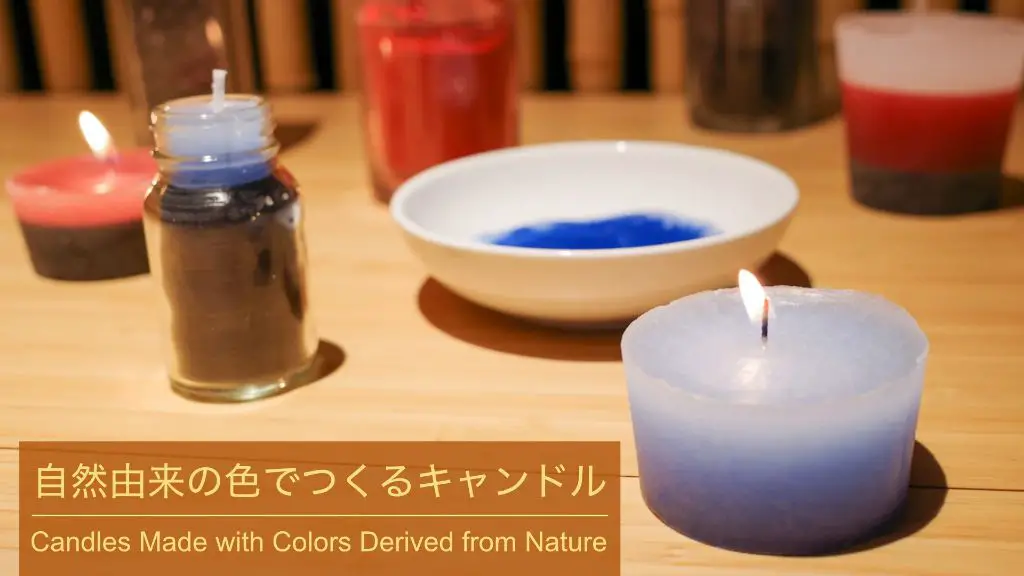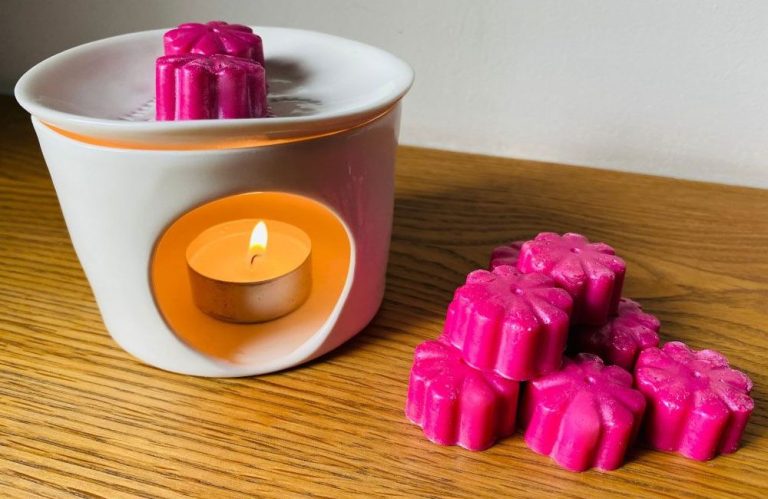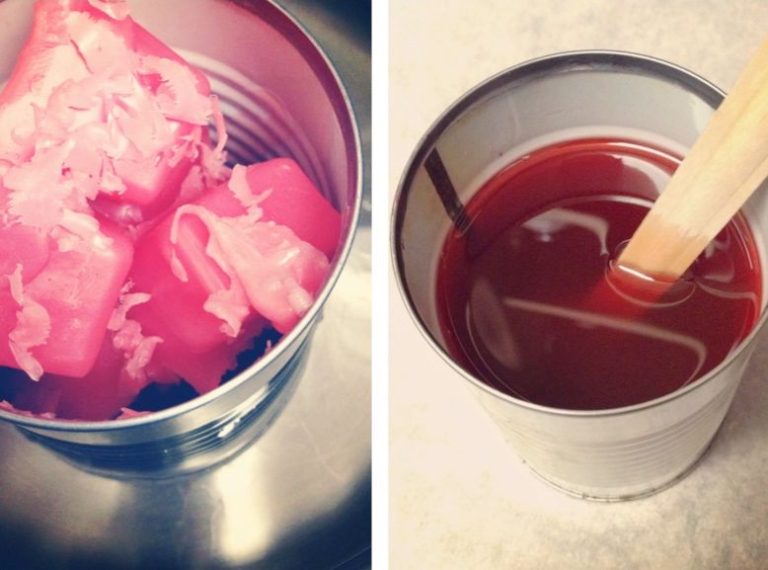What Is Best For Coloring Candles?
Colored candles can add beauty, elegance, and atmosphere to any environment. There are several ways to color candles, each with their own advantages. This article will provide an overview of the best methods for coloring candles, including:
- Crayons
- Dyes
- Pigments
- Essential oils
- Choosing colors
- Layering colors
- Troubleshooting
- Storing colored candles
Whether you’re an avid candle maker looking to expand your repertoire or a beginner seeking tips, this guide covers key techniques and considerations for successfully coloring candles at home.
Crayons
Crayons can be a cheap and easy way to add color to homemade candles. The wax in crayons is compatible with candle wax. However, there are some downsides to using crayons for candle dye.
The pros of using crayons are that they are inexpensive, readily available, and come in a wide variety of colors. The wax melts easily when grated or shaved into candle wax. Crayon shavings mix well into melted candle wax. Some types of crayons work better than others for candle dye. Oil-based crayons and gel crayons provide more vivid colors than standard wax crayons. Avoid using watercolor or washable crayons, as the dyes may bleed when burned (Source: https://www.thesprucecrafts.com/using-crayons-to-color-candles-516574).
The cons are that crayon colors tend to fade and bleed more than other candle dyes. The crayon wax may also clog candle wicks. Grating crayons can be messy and labor intensive compared to other coloring methods. Crayons don’t allow for precise color mixing like liquid dyes. Overuse of crayons can result in an oily candle surface (Source: https://www.brambleberry.com/how-to/candles/art0152-color-candles.html).
Tips for using crayons include grating them with a cheese grater or microplane, shaving into thin strips, or breaking into small pieces. Mix the shavings thoroughly into melted wax before pouring candles. Start with small amounts, adding more crayon gradually to achieve the desired color intensity.
Dyes
There are several types of liquid candle dyes available for coloring candles. Some popular options include:
- Solvent-based dyes – These dissolve well in wax and give vibrant colors. However, some makers prefer to avoid solvents. Popular brands like Jacquard dye use solvents.
- Water-based dyes – These use water as a carrier instead of solvents. They can produce slightly more muted colors in candles. Examples are Starlite water-based dyes.
- Designer Series dyes – These professional quality dyes deliver deep, vibrant hues. They are concentrated and a little goes a long way. Examples are CandleScience’s Designer Series dyes.
When using liquid candle dyes, it’s important to properly mix and incorporate the dye into the wax. Unlike color blocks or crayon wax, dyes need to be thoroughly dispersed. Here are some tips:
- Add dye dropwise, stirring continuously to evenly incorporate the color.
- Allow the dye to fully dissolve and mix before adding more. Going slowly prevents uneven coloring.
- Always mix dyes into cooled wax, never hot wax straight from the pour pot.
- Use toothpicks for dropwise precision when adding dyes.
Liquid dyes have some advantages over other coloring methods like crayons:
- They produce vibrant, translucent colors versus the opaque finish of crayons.
- A little dye goes a long way, making them economical.
- Colors blend easily for endless shade combinations.
- Measurements can be recorded for color consistency (source).
Pigments
Pigments are insoluble color particles that are used to coat the outside of candles to add color to the wax surface (Candles.org, 2022). They differ from dyes in that dyes actually dissolve into the wax to color it, while pigments sit on the surface as fine particles. Pigments come in powder form and need to be mixed with a small amount of oil to bind them together before application (Terre-de-bougies, 2022).

The main pros of using pigments are:
- They coat the outside of candles evenly with color.
- A variety of vivid colors are available.
- They allow layered effects by applying different colors.
Some cons are:
- They can rub off onto surfaces.
- Over time the color may become uneven as the candle burns.
- Too much pigment can clog the candle wick.
Overall, pigments work well for adding a pop of color to the outside of candles, creating colorful designs, and layering different hues. But dyes may be better for achieving an even color throughout the wax if that is the goal (Pylam Dyes, 2023).
Essential Oils
Essential oils can be a great way to naturally add both scent and color to candles. Here are some key benefits of using essential oils:
- Essential oils are derived from plants, so they provide an organic coloring option.
- Oils not only add color, but also impart natural fragrance.
- Certain oils are known to provide therapeutic benefits like stress relief or improved focus.
- Using pure essential oils avoids exposure to synthetic dyes or artificial fragrances.
Some essential oils that can infuse candles with natural color include:[1]
- Lavender – light purple
- Rosemary – pale green
- Lemon – light yellow
- Clove – reddish brown
- Peppermint – pale green
When using essential oils in candles, a few tips include:[2]
- Use oils sparingly, 1-3% of wax weight at most.
- Add oils after the wax has cooled below 180°F to preserve aroma.
- Consider blending oils for a more complex scent.
- Stir gently to evenly distribute the oils as color may not disperse.
Using pure essential oils in moderation can be a wonderful way to create naturally scented, colored candles.
[1] https://www.candlescience.com/essential-oil/all-candle-essential-oils/
[2] https://thehouseandhomestead.com/homemade-soy-candles-essential-oils/
Choosing Colors
When selecting colors for candle coloring, it’s important to consider both the symbolic meaning of colors as well as how to combine colors in a complementary way. Different colors evoke different energies and meanings, so choosing intentionally can enhance the magical properties of your candle.
Some popular candle colors and their symbolic meanings include:
- Red – love, passion, vigor
- Pink – romance, friendship, femininity
- Orange – creativity, fertility, success
- Yellow – learning, knowledge, positivity
- Green – growth, prosperity, health
- Blue – tranquility, peace, spirituality
- Purple – wisdom, intuition, magic
- Black – protection, banishing negativity
- White – purity, truth, healing
When using multiple colors, opt for complementary shades on the color wheel like orange and blue or purple and yellow. This creates visual interest. You can also group analogous colors like shades of blue and green for a calming effect. Using very different or clashing colors like red and green makes for an eclectic, bold statement.
The most important consideration is choosing colors that align with your intention. If doing a candle spell for self-confidence, yellow would strengthen that energy. Green and gold together would enhance prosperity magic. Consult reference guides on color meanings when selecting your palette.
Layering
Layering multiple colors in a single candle can create beautiful and visually interesting designs. However, proper technique is important for achieving clean, distinct layers without muddying the colors (How to Layer Candles). When layering, it’s crucial to wait until each layer has completely cooled and solidified before adding the next. The wax should be fully opaque and no longer warm (How to Make Layered Candles). Pouring into warm wax will cause the layers to blend together.
To layer successfully, pour the first layer and add dye or fragrance as desired. Allow it to fully harden before pouring the next layer. Continue allowing each layer to fully solidify before adding the next. Most experts recommend waiting at least 1-2 hours between layers. Thinner layers will harden faster. Pour layers slowly and evenly to prevent distortion or ripples on the surface. Top off layers as needed if the wax shrinks while cooling.
When working with darker dye colors, it’s best to layer them before lighter colors. Darker dyes may bleed into the lighter layers if poured on top. Always add lighter layers last. With careful pouring and sufficient cooling between layers, you can achieve beautifully distinct stripes, swirls, or other patterns.
Troubleshooting
Colored candles can sometimes experience issues like fading, bleeds, or discoloration. Here are some common problems and how to avoid them:
Candle color fading is a common issue, especially with lighter colors like pastels. Exposure to light causes the dyes and pigments to break down over time. To prevent fading, store candles in a cool, dark place and avoid direct sunlight. Adding a UV inhibitor to your wax can also help prolong color life (source: https://www.theflamingcandle.com/troubleshooting/).
Color bleeds happen when dyes from one layer of wax mix into another layer. To prevent bleeds, allow each layer to cool completely before adding the next color. You can also use multiple wicks or heat lamps to re-melt and lock in layers. Adding more dye to later layers can help them resist bleeding from underneath (source: https://www.candlescience.com/wax/soy-wax-trouble-shooting-guide/).
Discoloration after burning can be caused by overheating, poor wick sizing, or wax additives breaking down. Use proper wicks for the wax and diameter of your candles. Trim wicks to 1⁄4” before lighting. Avoid fragrances and dyes with sugar or vanillin, which can accelerate discoloration. Test burn all candles to ensure proper melt pool and burn (source: https://www.candlescience.com/wax/soy-wax-trouble-shooting-guide/).
Storing
Proper storage is crucial for preserving the colors of colored candles. According to How to Store and Organize Candles, it’s best to store colored candles in a cool, dry place away from direct sunlight. Light and heat can cause the colors to fade or change over time. How to Properly Store Candles to Make Them Last Longer also recommends storing candles in a dark, enclosed space to protect them. Wrapping each colored candle individually is advised to prevent colors from bleeding or rubbing off on each other during storage according to 3 Ways to Store Candles. With proper dark, cool, and enclosed storage, the vibrant colors of colored candles can be preserved for a long time.
Conclusion
To summarize, there are a few key tips for achieving the best colored candles:
- Use high quality dyes, pigments or oils to create vivid, lasting colors.
- Layer multiple thin coats instead of one thick coat for even color.
- Avoid crayons or watercolors which may bleed or fade.
- Store unused wax and dyes properly to prevent drying out.
- Match wax type and dye formulation for best results.
- Test colors on a small piece of wax before coloring an entire candle.
With some experimentation, you can create just the right custom colors for your candles. Stick to high quality, candle-specific ingredients and allow enough time for thorough mixing and drying between coats. Following these tips will lead to eye-catching, long-lasting candle colors to light up any space.




